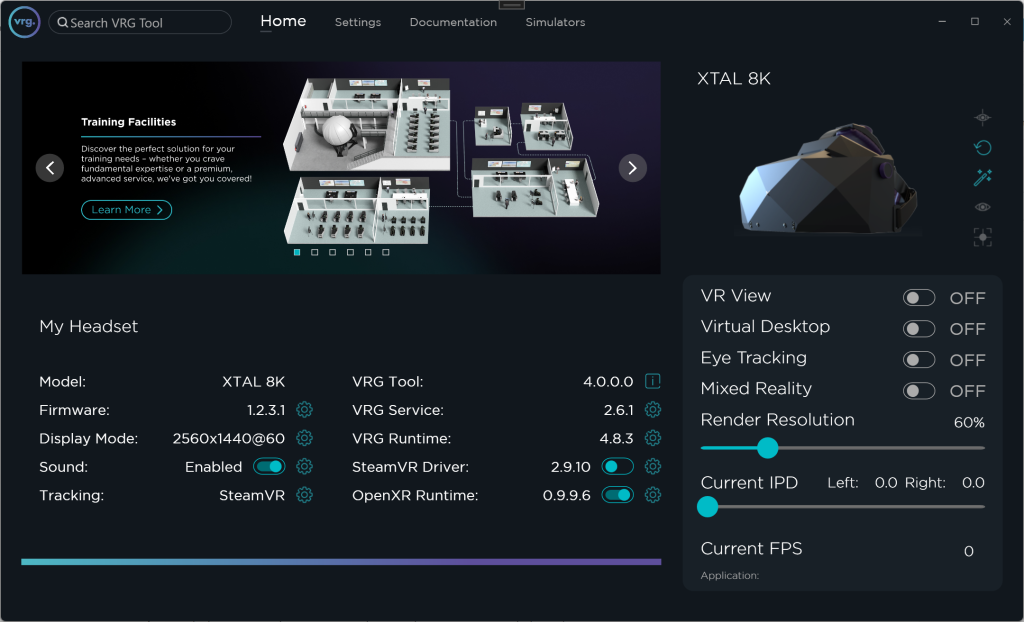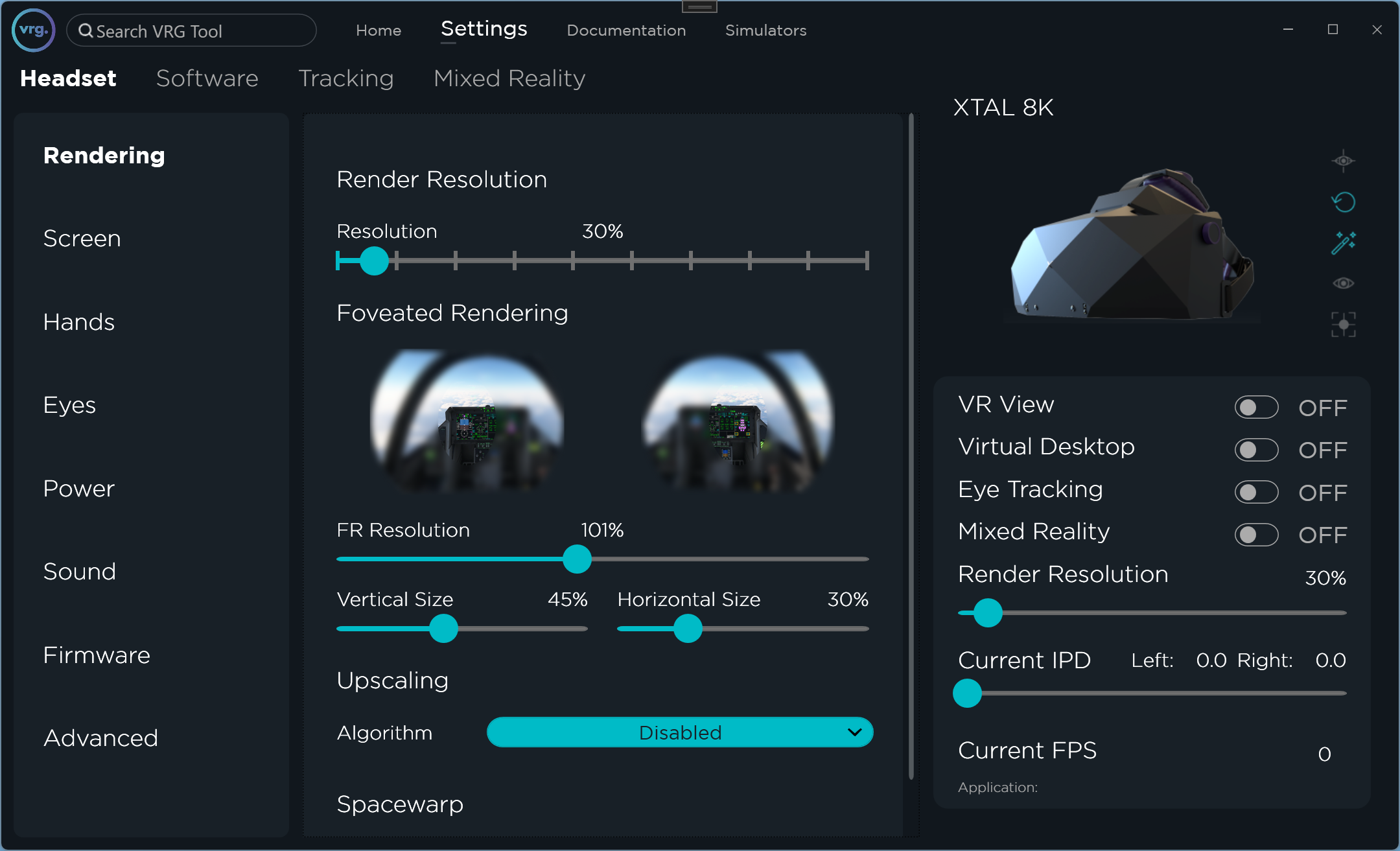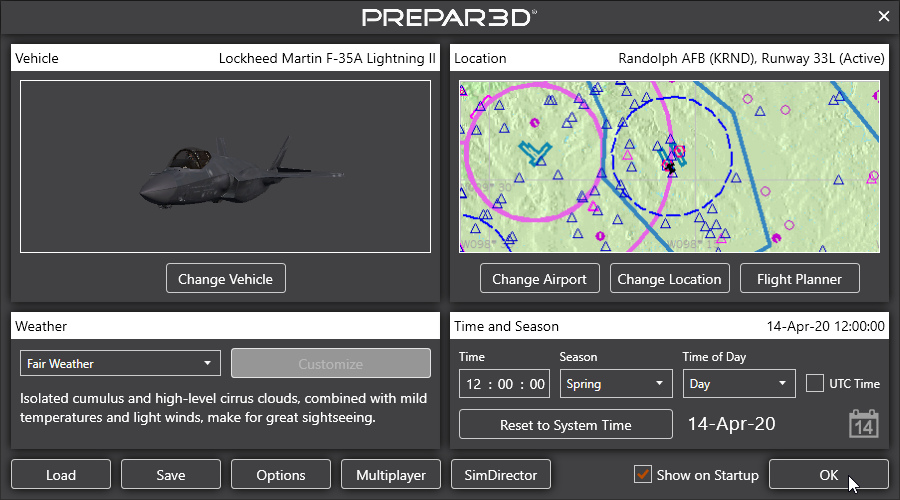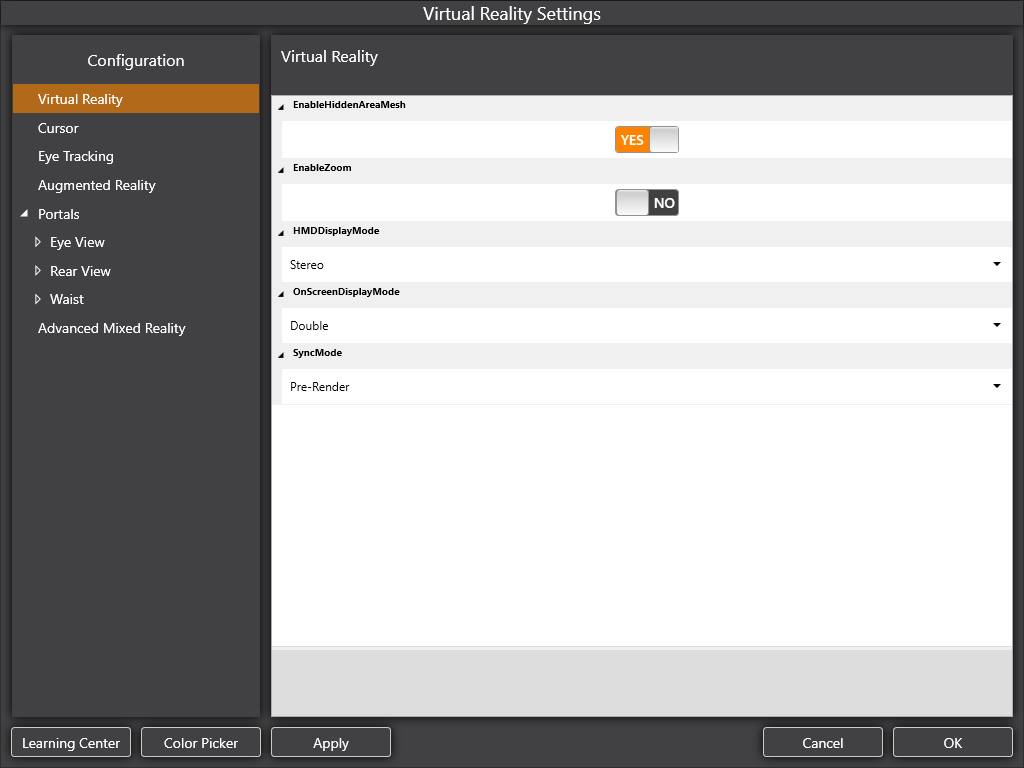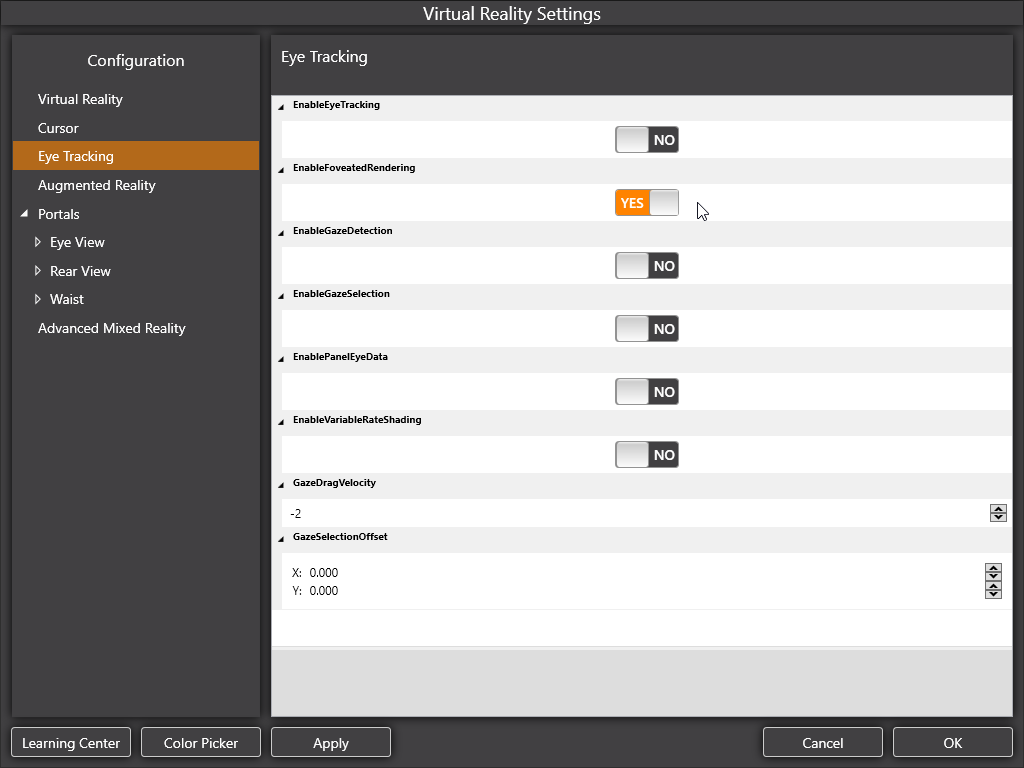Setup
- Start the VRG Tool service application
- Make sure that the VRG Runtime is installed and updated
- Make sure that the SteamVR Driver is disabled
- Make sure that you have the correct Tracking option selected
- use ‘IMU’ if you are using the XTAL internal IMU sensor without any additional room-scale tracking
- use ‘SteamVR’ if you are using the Lighthouse/SteamVR tracking system
- Optional (if you are using room-scale Lighthouse/SteamVR tracking system)
- Position the Lighthouse base stations around your tracking space, power them up, and make sure they are synchronized
- Start SteamVR
- Go to Settings – Headset Resolution
- Set the resolution to a value corresponding to the used GPU/CPU and your desired FPS
- If you are using the foveated rendering, we recommend setting the main resolution to 30% and foveated resolution to 100% (with 45% vertical size and 30% horizontal size)
- if you are using standard stereo rendering
- for the XTAL 3 and XTAL 8K headsets we recommend using the default 60%
- for the XTAL 5K headset we recommend using higher value (80-100%)
- be aware that currently changing the resolution can slow down the rendering process in Prepar3D, so we recommend disabling and reenabling VR after each resolution change
- Set the resolution to a value corresponding to the used GPU/CPU and your desired FPS
- Start Prepar3D
- Set your desired mission parameters and press OK
- Select ‘Virtual Reality’ – ‘Enable Virtual Reality’ – ‘VRG’
- If you want to use the foveated rendering functionality (recommended)
- Select ‘Virtual Reality’ – ‘VR Settings…’
- Change the ‘HMDDisplayMode’ option to ‘Stereo’
- Go to Eye Tracking section
- Change the ‘EnableFoveatedRendering’ option to ‘Yes’
- Select ‘Virtual Reality’ – ‘VR Settings…’
- The Eye Tracking features and MixedReality features can be accessed through the VRG Tool application on Settings – Headset – Eyes and Settings – Mixed reality pages, these features are currently not connected to any other similar functionality in Prepar3D menu
This page was last modified on March 22nd, 2025 at 18:15
< PreviousNext >